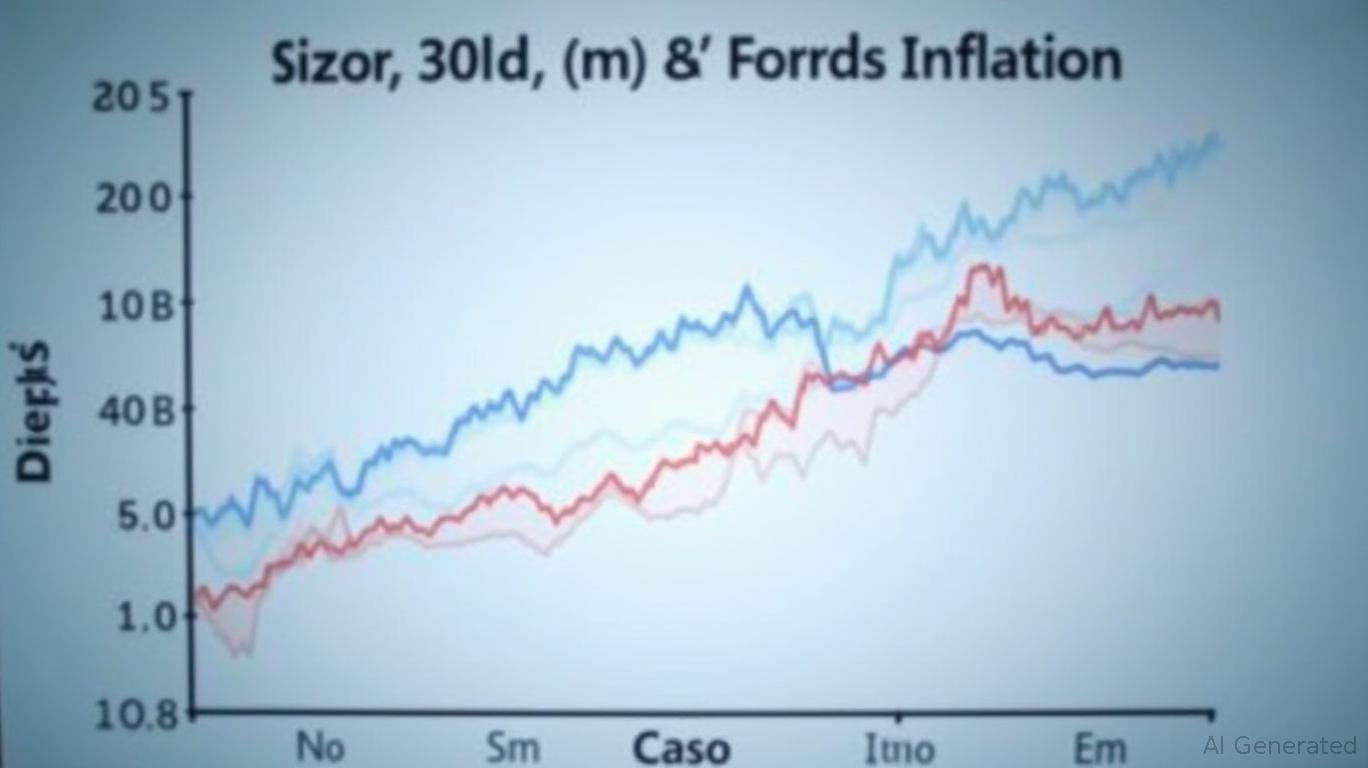The BOJ's Tightrope Walk: Balancing Inflation and Uncertainty in a Volatile Landscape
Japan's economy is caught in a delicate dance between stubborn inflation and global headwinds, leaving the Bank of Japan (BOJ) in a precarious policy stance. With core inflation hovering near 3.5% year-on-year in early 2025—well above its 2% target—the central bank faces a critical decision: raise rates to curb price pressures or maintain ultra-low policy to support a fragile recovery. The answer hinges on navigating two existential risks: persistent goods-driven inflation and U.S. trade policies that could destabilize both growth and bond markets. For investors, this creates a high-stakes environment for positioning in yen-denominated assets.
The Inflation Conundrum: Goods vs. Services
Japan's inflation dynamics differ starkly from other advanced economies. While global inflation is primarily driven by services (e.g., housing, healthcare), Japan's goods sector remains the primary inflation engine, fueled by energy, food, and imported components.

- Goods Inflation: Energy prices rose 9.3% YoY in April 2025 due to expiring subsidies, while rice prices surged 98% YoY for the seventh consecutive month. Fresh food inflation eased to 3.9%, but volatility persists.
- Services Inflation: Stagnant at 1.3% YoY, reflecting weak wage growth and structural deflationary pressures.
The BOJ's challenge? Goods inflation is largely beyond its control, driven by global commodity markets and supply chain bottlenecks. Raising rates would not meaningfully address this, while services inflation remains too weak to justify tighter policy.
BOJ's Policy Constraints: A Trifecta of Risks
The central bank's hands are tied by three interconnected risks:
- U.S. Trade Policy Uncertainty: A U.S. tariff moratorium has eased yen appreciation pressures, but ongoing negotiations risk reigniting imported inflation. A 10% tariff on Japanese exports could reduce corporate profits by 2-3%, per BOJ estimates.
- Bond Market Volatility: Rising long-term yields (e.g., the 10-year JGB yield hit 0.6% in May 2025) threaten Japan's massive public debt (260% of GDP). A 1% yield would add ¥12 trillion to annual interest costs.
- Global Growth Slowdown: Weak external demand—especially from China and Southeast Asia—has cut export growth to -1.5% YoY in Q1 2025.
The BOJ's May 2025 decision to hold rates at 0.5% reflects this reality. As Governor Ueda noted, “Monetary policy alone cannot resolve structural inflation drivers like rice shortages or energy costs.”
Implications for Investors: Navigating Yen-Denominated Assets
The BOJ's policy dilemma creates asymmetric risks for investors in Japanese equities and bonds:
Bonds: A Volatile Landscape
- Risk: Rising bond yields and geopolitical risks could trigger a sell-off. .
- Trade: Underweight JGBs unless yields exceed 1.0%. Consider short-dated maturities (e.g., 1-3 years) for capital preservation.
Equities: Sector-Specific Opportunities
- Defensive Plays:
- Healthcare: Low sensitivity to trade wars and demographic tailwinds (e.g., Takeda Pharmaceutical, +15% since Q4 2024).
- Tech/IT: Firms with global supply chains or U.S. revenue exposure (e.g., Keyence, +8% YoY).
- Value Plays:
- Financials: Banks like Mitsubishi UFJ (+6% in 2025) benefit from gradual yield curve steepening.
- Consumer Staples: Defensive demand for non-discretionary goods (e.g., Asahi Group, +4%).
Currency: Short-Term Caution
The yen's recent stability (USD/JPY near 145) may weaken if U.S. tariffs escalate. A 150 handle could trigger a 5-7% drop in yen-denominated equity returns for foreign investors.
Actionable Recommendations
- Underweight JGBs: Avoid long-dated bonds unless yields stabilize below 0.8%.
- Rotate to Defensive Equities: Allocate 30-40% to healthcare and tech sectors.
- Monitor BOJ Communication: A hawkish shift in June's policy statement could prompt a 15-20% rebound in financials.
Conclusion
The BOJ's policy dilemma underscores a critical truth: Japan's inflation is a global story, not a domestic one. With goods prices tied to energy markets and trade policy, the central bank's tools are limited. Investors must focus on sectors insulated from external shocks while hedging bond risks. As the yen's fate hangs on U.S.-Japan trade talks, the path forward remains as uncertain as the central bank's next move.

Comments
No comments yet